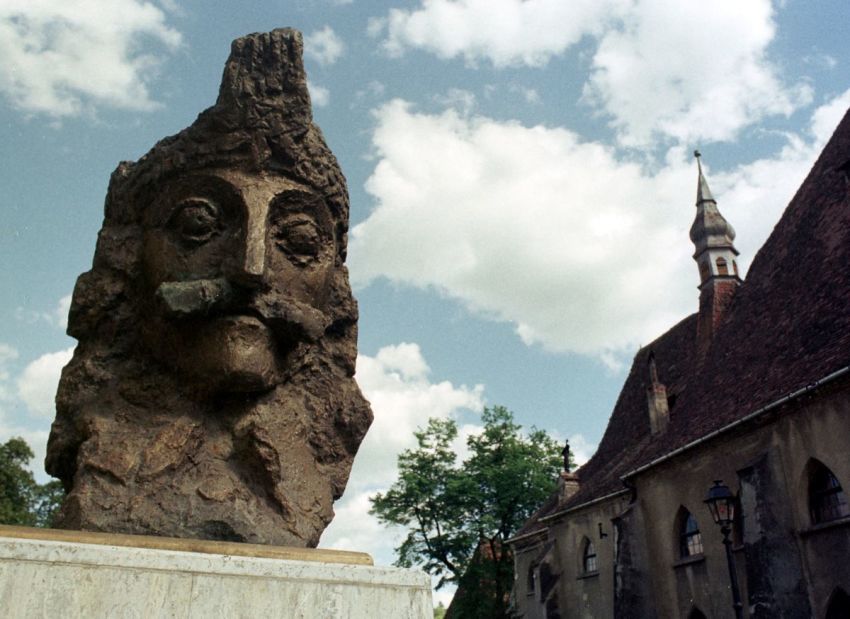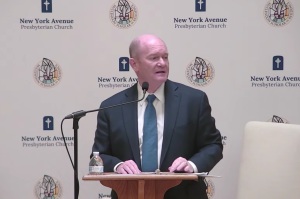Historical Dracula was a 'committed Christian' who terrorized Islamic invaders: author

Exactly how was an Orthodox Christian aristocrat transformed into the most infamous bloodsucking vampire of all time? And is anti-Christian historical revisionism to blame?
While most of us have heard the name Dracula at some point, it's usually in the context of Bram Stoker's 1897 novel or the countless movies, TV shows and book series based on that work of fiction.
But the historical inspiration for Dracula, Vlad the Impaler, also known as Vlad Tepes or Vlad III Dracula, was a 15th-century prince of Wallachia, located in modern-day Romania, whose own Christian faith led him to defend Christendom from invading hordes of Islamic jihadists, according to Raymond Ibrahim, author and expert in Islamic history and doctrine.
In writing his famous novel, Stoker sought to lend an "aura of historic legitimacy by connecting it to real people and events," Ibrahim told The Christian Post.
"For his novel's namesake, he found a real Romanian, the man under question, Vlad III Dracula," he said.
While none of the historical records Stoker used as inspiration for the character referenced any of the familiar Dracula iconography of crucifixes as a weakness, vampire bats and coffin beds, Ibrahim said some sources did portray him as a sadist who tortured and impaled his victims.
Ibrahim, author of Defenders of the West: The Christian Heroes Who Stood Against Islam, doesn't deny that Vlad was both vicious and an impaler of his enemies. But he contends most of those stories fail to acknowledge an "all-important" historical context.
As a young teen, Vlad III was taken hostage by the Ottoman Turks and was mentally and physically abused, said Ibrahim. His younger brother and fellow hostage, Radu, meanwhile, was "slowly transformed into Sultan Muhammad II's personal catamite," a boy who submits to a sexual relationship with a man.
It was during this time that Vlad also saw the Turks impaling their enemies — a practice which, upon returning to his homeland of Wallachia, he soon adopted as his own.
"Because he was vastly outnumbered by his Muslim enemies, at least 10 to one, he fought fire with fire and engaged in terror tactics, including by impaling the invading Turks and creating the legendary 'Forest of the Impaled' surrounding his castle, which was calculated to instill terror," Ibrahim explained.
And though this might sound downright inhumane by contemporary standards, Ibrahim asserts that context is key.
"Often left unmentioned is that virtually everyone then was cruel and impalement was a standard form of punishment, especially among the Turks, as well as several other European powers," he said.
"Put differently, just as Americans today are regularly hammered about their ancestors' role in slavery — without ever being told that everyone engaged in slavery, and often on a much worse scale than Americans — virtually everyone of Dracula's era was by today's standards cruel, and impalement was a standard form of execution."
Dracula, it seems, was also vehemently opposed to those who broke the Ten Commandments, specifically, "Thou shalt not steal."
According to one near contemporaneous chronicle, quoted in Ibrahim's book, Vlad "hated stealing so violently in his country that anyone who caused any evil or robbery, or a lie or an injustice, did not live long. Be he an important boyar, priest, or monk, or an ordinary person, be he the richest man, he would not escape death. So feared he was."
These tactics, the author added, stemmed not from evil but rather from a fervent passion for both God and country, a sentiment Ibrahim said was especially evident in a letter he sent to Hungarian King Matthias Corvinus.
In the letter dated Feb. 11, 1462, Vlad explained the reason he had declared war on the Turks was "for the preservation of Christianity":
[K]now that we have done all that we could, for the time being, to harm those who kept urging us to leave the Christians and to take their side; …. that we have broken our peace with them, not for our own benefit, but for the honor of … the Holy Crown of Your Majesty, and for the preservation of Christianity. ...
Because by no means do we want to leave unfinished what we began, but to follow this through to the end. Because we will not flee before their savagery, but stand by all of the Christians, and if he will kindly lend his ear to the prayers of his poor subjects and grants us victory over the Infidels, the Enemies of the Cross of Christ, it will be the greatest honor, benefit, and spiritual help for Your Majesty … and for all true Christians. Because we will not flee before their savagery, but by all means we will fight them. And if, God forbid, it ends badly for us, and our little country is lost, Your Majesty will not benefit from this either, because it will be a loss for all Christianity.
Such bold statements of faith, said Ibrahim, lend support to the notion that Dracula was, in fact, a "committed Christian" who saw his "Just War" against the invading Turks as "being first and foremost about defending Christendom from Islam."
Ibrahim pointed to one historian who said Vlad saw "himself as a Christian crusader against the infidel," someone who was often seen in the company of Romanian monks and fond of visiting and meditating at monasteries in the Tismana and Snagov, where Vlad's remains were long rumored to be located.
In addition to personally founding the monastery of Comana, Vlad also sent donations to Mount Athos, which, said Ibrahim, remains a "stronghold of Orthodoxy" through the present day.
"Even when he imposed the death penalty, he insisted upon Christian burials for any Christian deemed guilty," he added. "In a 15th-century context, these are all proof-positive examples that he was a committed Christian in keeping with his times and locale."
So how did Vlad's historical and cultural legacy go from "committed Christian" to a bloodsucking vampire?
For Ibrahim, the same "narrative-shapers" in Hollywood who "eliminated or whitewashed Islam's negative role in shaping Vlad" have also "eliminated or demonized his Christian background as fueling his cruelty."
"Before the world learned about fake news, there was fake history, and its goal was always the same: to demonize Western elements by exaggerating and stripping them of context and, above all, expunging or demonizing their Christian aspects, while leaving, in this case, aggressive Islam out of the equation," he said.
That truth, Ibrahim added, is underscored by the fact that, despite centuries of such stories, Vlad remains a hero in his native Romania to this very day.
"Til' now, whenever there is talk of corruption or immorality, it is common for Romanians to resignedly end the conversation by quoting the following lines of an old poem: 'Where art thou, old prince, Vlad, on them all to lay thy hands,'" he added.
Ibrahim pointed to other historical figures who were once lauded as defenders of Christendom such as Richard Lionheart, Saint Louis, and Saint Ferdinand, who, over centuries, have "been systematically taken down in academia, their reputations besmirched, and with no one standing up for them."
And in the case of Vlad himself, Ibrahim said, he has simply not been given a fair shake.
"The overtly propagandistic tracts demonizing him were and continue to be taken at face value, while the source documents I reconstructed his biography from are completely ignored," he said.
"Finally, adding insult to injury, the novel and subsequent movies transformed him into a cross-hating vampire."
Ian M. Giatti is a reporter for The Christian Post and the author of BACKWARDS DAD: a children's book for grownups. He can be reached at: ian.giatti@christianpost.com.



























